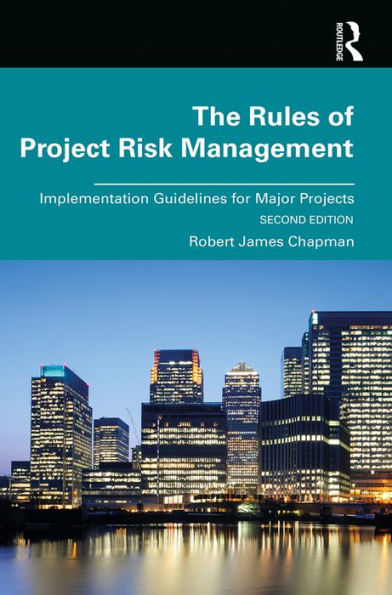Table of Contents
Dedication,
Endorsements for the first edition,
Endorsements for the second edition,
List of Figures,
List of Tables,
List of Mini Case Studies,
About the author,
Foreword,
Preface to the second edition,
Acknowledgements,
Audience,
How to read this book,
Glossary,
Section 1 LAYOUT OF THE BOOK
Section 2 OVERVIEW OF PROJECT RISK MANAGEMENT
Section 3 ENVIRONMENT: The uncertainty characteristics of a project are the product of their origin and particularly their context,
Section 4 EXTERNAL PROJECT STAKEHOLDERS: Project success requires comprehension of the potential impact of external stakeholders on project uncertainty, Contractor participation in risk management is driven by contract obligations,
Section 5 ORGANISATION and CULTURE: Risk management aspirations need to be rooted in reality, The risk profile of a project will be directly influenced by the procurement process,
Section 6 LEADERSHIP and GOVERNANCE: Awareness of the need to manage risk, Mandate for the implementation of risk management, Creation and communication of accountabilities and responsibilities, Internal control and risk assurance processes, Effective decision making is dependent on risk management, Senior management commitment to risk management needs to be visible,
Section 7 INTERNAL STAKEHOLDERS: Risk management must include an assessment of internal stakeholders, Involve internal stakeholders in evaluation of the risks to the business case, Inculcating risk is improved by convincing the sceptics,
Section 8 RISK RESOURCES: Risk team selection will directly influence risk management effectiveness, The budget will dictate the level of risk management support,
Section 9 SYSTEMS: A risk management framework must establish a firm foundation, Commitment commences with a risk policy, Project outcomes are enriched by implementing lessons learned., Risk analysis needs to recognise the existence of optimism bias., The workshop ‘circus’ is avoided by recognising behaviour types., Project success and particularly risk management is dependent on proactive behaviour, Risk descriptions are improved by adopting a metalanguage, Risk database integration is improved when scheduled, Risk model results are improved by sense checking, Risk management is enhanced through integration, Assessing the risk profile of a project must take account of its degree of complexity., Risk management must include examination of opportunities as well as threats,
APPENDIX A: EFQM Excellence Model,
APPENDIX B: Systems thinking,
APPENDIX C: Causes of project failure,
APPENDIX D: Observations about the Standard,
APPENDIX E: Drivers for project success,
APPENDIX F: Mitchel, Bradley and Wood’s stakeholder typology,
APPENDIX G: The power – predictability matrix,
APPENDIX H: Maturity Model Descriptions,
APPENDIX I: Recording Lessons Learned,
APPENDIX J: Procurement Process,
APPENDIX K: Cybersecurity CMM,
Index



